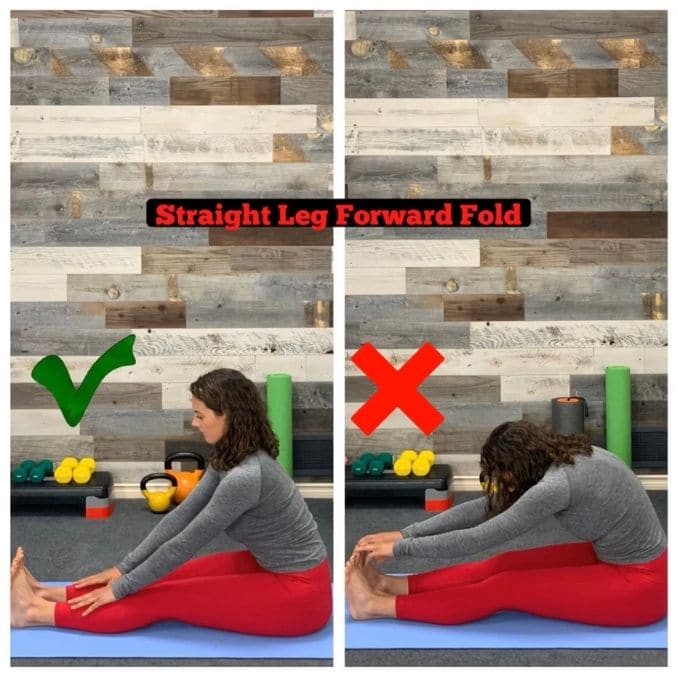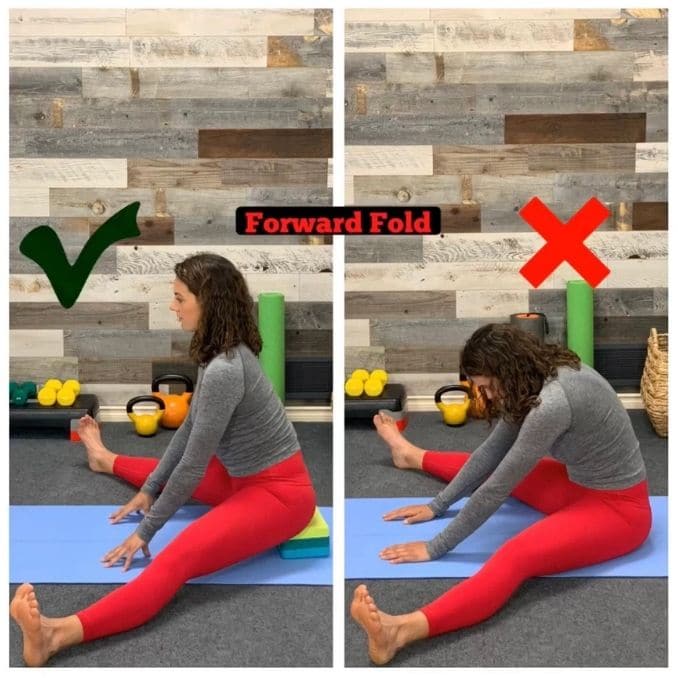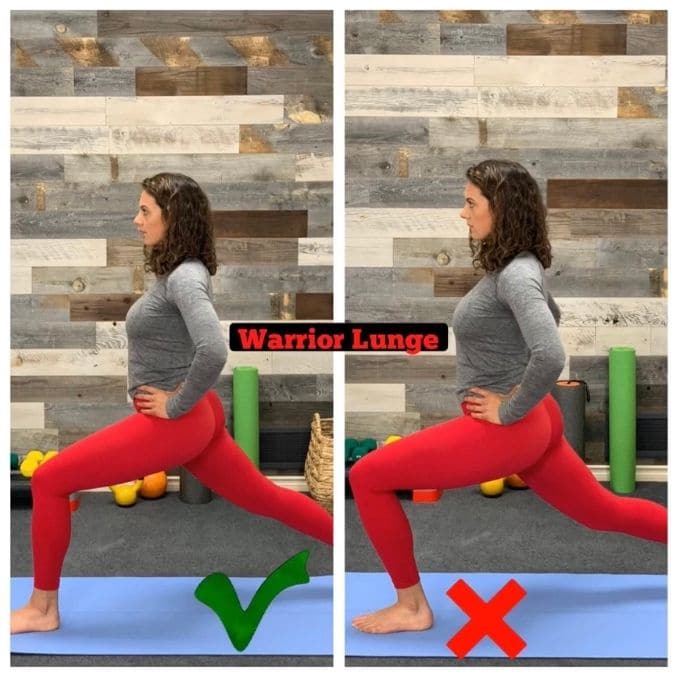As a yoga instructor, I see many of the same misalignments in my students and in myself. Maintaining proper alignment in yoga poses is how we practice yoga safely, avoid injuries and get the most benefit out of each posture. In this article, I will take you through the dos and don’ts of four common yoga postures. Remember to listen to your body and to only come into poses that feel good. The breath is a great guide, so always make sure you can take deep, full breaths in every posture.
Mountain Pose (Tadasana)

Do:
Do keep your head, shoulders, hips, knees, and ankles in line. Mountain pose is the perfect posture to learn how to align your body, something we often call “stacking your joints”. Begin by standing with your feet hip-width apart, which is about a fist and a half-width apart. Ground down through the 3 points of your feet: the base of your big toe, the little toe, and the heel. Engage through your quads to lift your knee caps. Keep your belly button pulled back toward your spine. Relax your shoulders away from your ears and gently pull your shoulder blades together, opening across your chest. Tuck your chin slightly so that your neck is an extension of your spine. Your head should feel like it is floating, not straining your neck.
Don’t:
Don’t slouch, over-arch your lower back or hyperextend your knees. Slouching forward puts excessive stress on your neck and leads to headaches, tension, pain, and poor posture. Allowing your body to collapse into your low back can create back pain and injury over the long-term. Hyperextending your knees puts force through your knee joints that can also lead to pain and injury.
Seated Forward Fold (Paschimottanasana)
 Do:
Do:
Do keep your spine long, your neck as an extension of your spine, your shoulders down your back, and a slight bend in your knees. Maintaining integrity in your spine is one of the keys to safely performing all yoga poses. This requires core strength and hinging from your hips, not from the back. Your neck is also part of your spine, so remember to keep your neck long as well, which may mean slightly tucking your chin and pulling your head back. Your shoulders should be down away from your ears and your shoulder blades should be pulling together. Unless you are engaging your thighs, make sure to keep a bend in your knees to protect your knee joints. On each inhale, grow tall from your tailbone to the crown of your head, and on each exhale, try to hinge forward a bit further.
Don’t:
Don’t round through your spine or bring your shoulders up to your ears. This is how we lose integrity in the spine and risk injuring our backs. Most of us sit a lot and slouch forward, so we do not want to ingrain this movement pattern anymore.
Wide-Legged Forward Fold (Prasarita Padottanasana)
 Do:
Do:
Do keep your spine long, your neck in a neutral position, and either engage your thighs or bend your knees slightly. Just like in the seated forward fold, we want to maintain integrity in your spine and only hinge forward from your hips. This can be done by elevating your hips on a block, pillow, or a folded blanket. This gives you more room in the back body (the backs of your legs and back) to hinge forward at the hips. If your legs are straight, make sure to engage your thighs to protect your knees. Otherwise, bend your knees as much as you need. On each inhale, grow tall from your seat to the top of your head, and on each exhale, try to come a bit deeper into the fold.
Don’t:
Don’t slouch your head forward, round your shoulders or spine, or hyperextend your knees. Integrity in the spine is key here again, and we do not want to see the curve in the lower back disappear. Unless your legs are engaged, do not allow your knees to straighten.
High Lunge (Anjaneyasana)

Do:
Do keep your front knee stacked over your front ankle, your hips squared forward, your spine long, and your shoulders down your back. Getting yourself into proper alignment in a high lunge position means finding the right stance for your legs. Some people may take a big step back with their back leg, while others may come into a shallower lunge. This will all depend on your body’s anatomy and your level of flexibility. The important thing is keeping your front knee stacked right on top of your front ankle. Sometimes the knee likes to fall into the center, so make sure to keep guiding it on top of the ankle. Work to straighten your back leg by engaging strongly through your back thigh. To the square, your hips, pull the hip of your back leg forward so that both hips facing forward. Use your core to grow up out of your hips, not collapsing into them. With your arms overhead, relax your shoulders away from your ears and gently pull your shoulder blades together.
Don’t:
Don’t shift your front knee past your front ankle, arch your spine, collapse into your hips or have your hips off-center. Once your knee passes your ankle, we increase the risk of injuring your knee by placing too much force through the joint. When we do not actively engage our core and keep the spine long, we collapse into the hips, arch our low back and shift our hips off-center. All of these contribute to poor posture, pain, and potential injuries.
When we first begin a yoga practice, these seemingly endless alignment cues can feel overwhelming. However, you will find that most of the alignment basics apply to every yoga pose, and mastering one pose will help you in other poses as well. Don’t worry if not everything makes sense at the beginning. As you practice and start to understand your body mechanics better, the need to overthink positioning will decrease.
Learn the best all-natural ways to eliminate body stiffness once and for all. Click here for more information.





